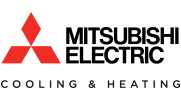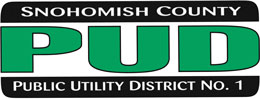Ways to Improve Ventilation for Better Indoor Air Quality: A Homeowner’s Guide to a Better Home
Creating a healthy and comfortable living or working environment is not just about having the right furniture or soothing wall colors—it’s also about the air we breathe.
The quality of indoor air plays a pivotal role in our overall health and well-being. One key element that greatly impacts indoor air quality is the ventilation system.
In this guide, we will delve deeper into the importance of proper ventilation, the different types of ventilation systems, and practical steps you can take to improve indoor air quality.
Need help to improve your residential or commercial property’s air quality? Contact us today for professional AC repair, installation, and maintenance services!
Ventilation and Its Significance for Health and Comfort
Proper ventilation plays a huge role in our health, comfort, and productivity. Let’s take a closer look at the top reasons why adequate ventilation is important.
Reducing Airborne Pollutants for Healthier Breathing
Ventilation is a crucial ally in maintaining a healthy indoor environment. A well-ventilated space promotes the dilution and removal of airborne pollutants such as dust, allergens, chemical fumes, and bacteria.
This is particularly important for people with respiratory conditions such as asthma, where common triggers like dust mites, mold, pet dander, and secondhand smoke can exacerbate symptoms.
By improving ventilation, we can significantly reduce the concentration of these pollutants in the air we breathe.
Regulating Humidity for Optimal Comfort
The role of ventilation extends to the regulation of indoor humidity levels. High moisture levels can lead to the growth of mold and other moisture-related issues, while low humidity can cause dry skin and respiratory discomfort.
Adequate ventilation helps maintain an ideal indoor humidity level, typically between 30% and 50%, ensuring a comfortable environment for occupants.
Enhancing Well-being and Productivity Through Improved Air Quality
Ventilation isn’t just about the physical aspects of our environment; it also impacts our mental and emotional well-being. Improved air quality can significantly enhance occupant comfort, leading to tangible benefits such as better sleep quality, improved focus, and increased productivity. Moreover, fresh, clean air can uplift your mood and reduce stress levels.
Selecting the Right Ventilation System: Tailoring to Your Needs
Understanding the types of ventilation systems and their respective advantages can help homeowners make informed decisions tailored to their specific needs. Ventilation methods typically fall into three categories: natural, mechanical, and hybrid.
Natural Ventilation
Natural Ventilation is the most basic form of ventilation. It relies on the natural flow of air through doors, windows, vents, and other openings to replace stale indoor air with fresh outdoor air. This method can be highly energy-efficient as it doesn’t require any electrical power.
However, its effectiveness is significantly influenced by outdoor weather conditions. On calm days or during extreme temperatures, natural ventilation may not be sufficient.
This system is best suited for homeowners in mild climates, where temperature fluctuations are minimal, and those looking to save on energy costs.
Mechanical Ventilation
Mechanical Ventilation involves using equipment such as fans, air handlers, and ventilation systems to control air movement. HVAC (Heating, Ventilation, and Air Conditioning) systems fall into this category, providing heating, cooling, and ventilation.
Mechanical ventilation offers more precision and control over air circulation and indoor air quality, making it ideal for homes in regions with extreme temperatures or poor air quality.
These systems can be more energy-intensive and require regular maintenance, but they provide consistent ventilation regardless of outdoor conditions.
This type of system is recommended for homeowners prioritizing air quality control and those living in harsh climates.
Hybrid Ventilation
Hybrid Ventilation, also known as mixed-mode ventilation, merges the benefits of natural and mechanical systems. It utilizes natural ventilation when weather conditions are favorable and switches to mechanical ventilation when necessary.
This approach provides the flexibility of natural ventilation and the control of mechanical ventilation.
Hybrid ventilation is an excellent choice for homeowners who want to balance energy efficiency with effective air quality control. This system is also beneficial for those living in areas with varying weather conditions throughout the year.
It’s the ideal middle-ground solution, providing energy savings during mild weather and optimal air quality during more extreme conditions.
Choosing the right ventilation system is about understanding your home’s needs, considering local weather conditions, and factoring in your personal preferences for energy efficiency and air quality control.
By evaluating each system’s advantages and trade-offs, you can select a system that best aligns with your needs, improving your home’s indoor air quality and overall comfort.
Need help finalizing your decision? Call us today at (855) 345-6161 for expert assistance!
Ways to Improve Ventilation for Better Indoor Air Quality
You don’t need to spend a lot of money or make grand alterations to your home to enhance ventilation and air quality. Here are some cost-effective strategies you can try:
Maximizing Natural Ventilation
The simplest way to enhance ventilation is to open your windows and doors regularly, encouraging fresh outdoor air to circulate within your space. Even a small crack can make a significant impact, especially in rooms with high moisture levels such as kitchens and bathrooms.
If possible, create a cross-ventilation effect by opening windows on opposite sides of a room. This strategy enables air to flow freely throughout the space, effectively diluting airborne pollutants.
Efficient Use of Exhaust Fans
Exhaust fans, particularly those in the kitchen and bathroom, are crucial for removing odors and reducing moisture levels. This reduction helps prevent the growth of mold and mildew—common culprits for poor indoor air quality.
Consider running these fans during and for several minutes after activities like cooking or bathing to maximize their effectiveness.
Installing Air Filters and Purifiers
Air filters play a crucial role in trapping airborne pollutants such as dust, pollen, and pet dander. While some HVAC systems come with built-in air filters, standalone air purifiers can provide an additional layer of protection.
This strategy is especially helpful for those with allergies or respiratory conditions. For the best results, look for air purifiers with HEPA filters, as they can trap very small particles effectively.
Upgrading HVAC Systems
Modern HVAC systems often come equipped with advanced features that allow better control over ventilation and humidity.
Consider upgrading to a system with a HEPA filter, which can trap ultrafine particles or a system with an energy recovery ventilator.
The latter exchanges stale indoor air with fresh outdoor air without significant loss of heating or cooling energy, making it a more energy-efficient option.
Adding Indoor Plants
Certain indoor plants act as natural air purifiers. For example, spider plants, peace lilies, and Boston ferns are known for their air-cleaning properties.
They absorb certain pollutants from the air, improving its overall quality. However, it’s crucial to maintain these plants properly to prevent mold growth in the soil, which could counteract their benefits.
Limiting Number of Visitors
The more people in a space, the higher the potential for airborne pollutants, including bacteria and viruses. Therefore, limiting the number of visitors you have over can be a practical step to improve indoor air quality, particularly in smaller spaces.
When you do host guests, consider gathering in larger rooms or outdoor spaces where there’s more room for air to circulate. Additionally, encourage your visitors to follow good hygiene practices, such as washing hands regularly, to maintain a healthier environment.
Every little action contributes to the quality of the air you breathe indoors. So, start today, and breathe easier knowing you’re making a positive difference.
Contact BelRed today for personalized products and services.
Ensuring Optimal Performance Through Proper Maintenance
Choosing the right ventilation system is just the first step toward improving your indoor air quality. Maintaining these systems effectively is equally crucial to ensuring they continue to operate at their best.
Here are some key maintenance activities that can help you get the most out of your ventilation systems:
Regular Duct Cleaning
Ducts, the channels that carry air throughout your building, can accumulate dust, pet hair, and other pollutants over time. This buildup can restrict airflow, reducing your system’s efficiency and potentially recirculating these pollutants into your indoor air.
Regular duct cleaning, ideally every 3 to 5 years, can help maintain efficient airflow and mitigate potential health hazards. It’s advisable to hire professional duct cleaning services, as they have the right tools and expertise to clean your ducts thoroughly and safely.
Frequent Filter Replacement
Filters play a crucial role in trapping pollutants, and over time, they can become clogged and less effective. Therefore, filters need to be replaced regularly.
The frequency of replacement will depend on the type of filter you’re using and the specific conditions of your home, such as the amount of dust or the presence of pets. However, a good rule of thumb is to replace your filters every 1 to 3 months.
Remember to check the manufacturer’s guidelines for your specific filter, as some high-efficiency filters may last longer.
Consistent Monitoring of Indoor Air Quality
Regularly testing your indoor air quality can help you identify potential issues early and take corrective action.
Devices known as indoor air quality monitors can measure various parameters, including temperature, humidity levels, and concentrations of certain pollutants like volatile organic compounds (VOCs) and particulate matter.
These monitors can provide real-time data about your indoor air quality, helping you understand whether your ventilation strategies are working or if you need to make adjustments.
Regular HVAC System Check-ups
Your HVAC system, particularly if it includes an air conditioning unit, requires regular check-ups to ensure it’s operating efficiently and safely.
These check-ups should be performed at least once a year and include tasks like checking for leaks, inspecting and cleaning the coils, and verifying that the thermostat is functioning correctly.
These check-ups can prevent minor issues from becoming major problems and can extend the life of your system.
Breathe Easier With BelRed!
Take the first step towards a healthier, more comfortable home today. Here at BelRed, we understand the crucial role ventilation plays in maintaining optimal indoor air quality. That’s why we’re committed to helping you create the best indoor environment possible.
Whether you’re looking to upgrade your ventilation system, install new air filters, or simply need advice on improving natural ventilation, we’ve got you covered. Our team of certified professionals is ready to assist with a range of services designed to improve the air you breathe indoors.
With our top-tier AC repair, installation, and maintenance services, you can rest assured that your HVAC systems will be operating at peak performance.
Contact BelRed today, and let’s create a healthier, happier home together!







